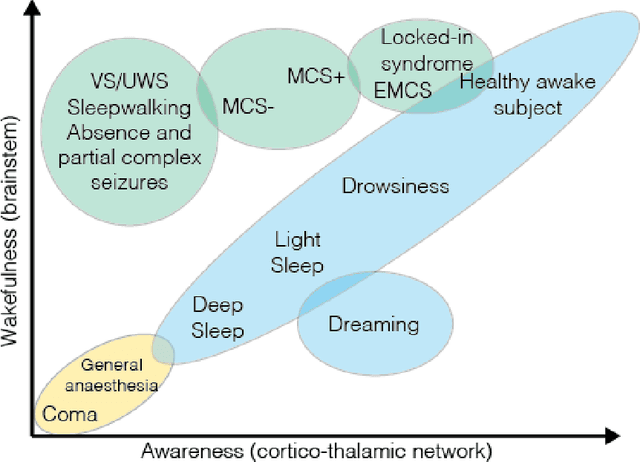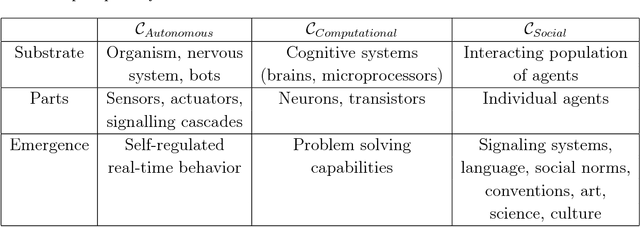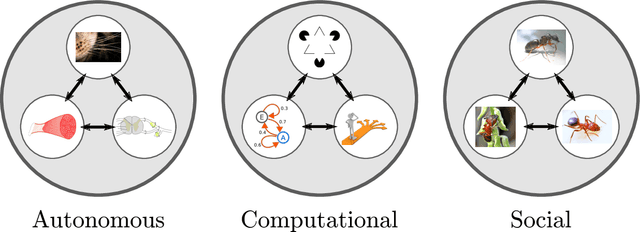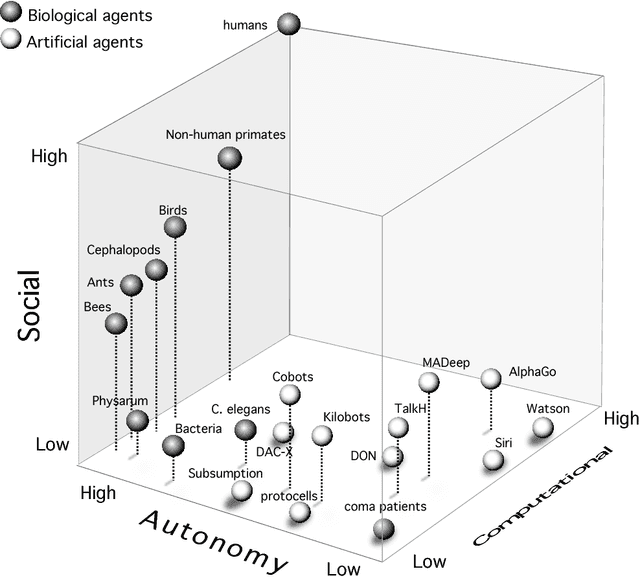The Morphospace of Consciousness
Paper and Code
Jun 08, 2017



Given recent proposals to synthesize consciousness, how many forms of conscious machines can one distinguish and on what grounds? Based on current clinical scales of consciousness, that measure cognitive awareness and wakefulness, we take a perspective on how contemporary artificially intelligent machines and synthetically engineered life forms would measure on these scales. To do so, we argue that awareness and wakefulness can be associated to computational and autonomous complexity respectively. Then, building on insights from cognitive robotics, we ask what function consciousness serves, and interpret it as an evolutionary game-theoretic strategy. We make the case for a third type of complexity necessary for describing consciousness, namely, social complexity. Having identified these complexity types, allows us to represent both, biological and synthetic systems in a common morphospace. This suggests an embodiment-based taxonomy of consciousness. In particular, we distinguish four forms of consciousness, based on embodiment: biological, synthetic, group (resulting from group interactions) and simulated consciousness (embodied by virtual agents within a simulated reality). Such a taxonomy is useful for studying comparative signatures of consciousness across domains, in order to highlight design principles necessary to engineer conscious machines. This is particularly relevant in the light of recent developments at the crossroads of neuroscience, biomedical engineering, artificial intelligence and biomimetics.
 Add to Chrome
Add to Chrome Add to Firefox
Add to Firefox Add to Edge
Add to Edge